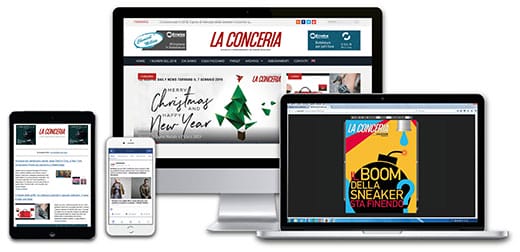2025 isn’t just another year for the luxury world. It is a time of strategic transition that forces the industry to redefine priorities and visions. Outlining the prospects was Claudia D’Arpizio, partner at Bain & Company, who spoke at the third edition of Change Maker, organized by Zalando and CNMI. It was an opportunity to reflect on a market that, after the post-pandemic surge, is now undergoing a readjustment phase. That being said, one thing is certain: brands have to choose between the ultra-rich and volumes. “It’s not easy to define today what the future of luxury will look like”, she said. “We have tried to answer the question, as many operators are asking : how much of this change is structural, and how much is simply transitory?
Brands must choose
D’Arpizio raises a number of questions for an industry that has begun to slow down after years of expansion. As Fashion Magazine reports, for the analyst, the real turning point is the transformation of luxury into such a highly emotional category that it has taken on a different definition. “People buy luxury items for four main reasons: to gratify themselves, to experience an emotion, to mark an important moment in their lives, or as a form of investment. This one isn’t a functional category, but an emotional one”. So much so that “today, the real competitor for it is the personal investment universe. One can choose between a purse, a starry dinner, a trip, a watch. Everything responds to the same need: self-worth”.
Few or all?
It’s therefore no longer enough for brands to offer exclusivity or quality, as much as meaning, authenticity and values. Not least because, according to D’Arpizio, 300 million new luxury consumers, driven by the growth of the middle and upper classes in Asia, Latin America (and other emerging markets). will burst onto the scene in the next decade. A large and diverse audience, which calls for strategic thinking: “Do we want to serve an ultra-exclusive niche or a broader audience? Brands must choose now who they want to talk to, with what tone, and through what values”.
Minimalism in sight
For the analyst, a change in tastes would also be taking place, especially in young people who now lean toward minimalism and more judicious consumption. “Today we see it growing”, she says, “a less impulsive consumption, more connected to meaning. We need to respond with culture, products that have meaning and a deep connection to lasting values”.
The issue of distribution
The change isn’t only about the product, but also about the way it’s distributed: between mono-brand and multi-brand. “Consumers want both. They want selection, advice and proximity. The challenge is to offer a type of fluid, integrated customer experience, able to merge physical and digital into one coherent narrative”. According to D’Arpizio, the era of direct-to-consumer as a single strategy is over. It’s time for a synergistic vision, made up of alliances between brands, retailers and platforms capable of amplifying the experience. “The future is a merger between online and offline. Customers no longer think by channels: they want consistency and connection”.
Photo from Saint Laurent
Read also:











